Related Research Articles

Blues is a music genre and musical form that originated amongst African-Americans in the Deep South of the United States around the 1860s. Blues incorporated spirituals, work songs, field hollers, shouts, chants, and rhymed simple narrative ballads from the African-American culture. The blues form is ubiquitous in jazz, rhythm and blues, and rock and roll, and is characterized by the call-and-response pattern, the blues scale, and specific chord progressions, of which the twelve-bar blues is the most common. Blue notes, usually thirds, fifths or sevenths flattened in pitch, are also an essential part of the sound. Blues shuffles or walking bass reinforce the trance-like rhythm and form a repetitive effect known as the groove.

Ray Charles Robinson Sr. was an American singer, songwriter and pianist. He is regarded as one of the most iconic and influential musicians in history, and was often referred to by contemporaries as "The Genius". Among friends and fellow musicians he preferred being called "Brother Ray". Charles was blinded during childhood, possibly due to glaucoma.

Jerome Solon Felder, known professionally as Doc Pomus, was an American blues singer and songwriter. He is best known as the co-writer of many rock and roll hits. Pomus was inducted into the Rock and Roll Hall of Fame as a non-performer in 1992, the Songwriters Hall of Fame (1992), and the Blues Hall of Fame (2012).
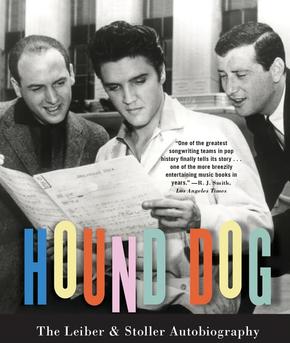
Leiber and Stoller were an American Grammy award-winning songwriting and record production duo, consisting of lyricist Jerry Leiber and composer Mike Stoller. As well as many R&B and pop hits, they wrote numerous standards for Broadway.
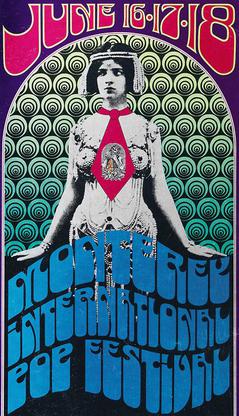
The Monterey International Pop Festival was a three-day music festival held June 16 to 18, 1967, at the Monterey County Fairgrounds in Monterey, California. The festival is remembered for the first major American appearances by the Jimi Hendrix Experience, the Who and Ravi Shankar, the first large-scale public performance of Janis Joplin and the introduction of Otis Redding to a mass American audience.

"What'd I Say" is an American rhythm and blues song by Ray Charles, released in 1959. As a single divided into two parts, it was one of the first soul songs. The composition was improvised one evening late in 1958 when Charles, his orchestra, and backup singers had played their entire set list at a show and still had time left; the response from many audiences was so enthusiastic that Charles announced to his producer that he was going to record it.

Modern Sounds in Country and Western Music is a studio album by American singer and pianist Ray Charles. It was recorded in February 1962 at Capitol Studios in New York City and United Western Recorders in Hollywood, and released in April of that year by ABC-Paramount Records.

David Ritz is an American author. He has written novels, biographies, magazine articles, and over a hundred liner notes for artists such as Aretha Franklin, Ray Charles, and Nat King Cole. He has coauthored 36 autobiographies, including some celebrities' autobiographies.
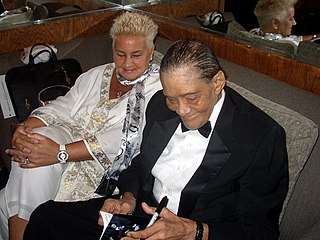
James Victor Scott, known professionally as Little Jimmy Scott or Jimmy Scott, was an American jazz vocalist known for his high natural contralto voice and his sensitivity on ballads and love songs.

David "Fathead" Newman was an American jazz and rhythm-and-blues saxophonist, who made numerous recordings as a session musician and leader, but is best known for his work as a sideman on seminal 1950s and early 1960s recordings by Ray Charles.

Shotgun Willie is the 16th studio album by American country music singer-songwriter Willie Nelson, released on June 11, 1973. The recording marks a change of style for Nelson, who later stated that the album "cleared his throat". When Nelson refused to sign an early extension of his contract with RCA Records in 1972, the label decided not to release any further recordings. Nelson hired Neil Reshen as his manager, and while Reshen negotiated with RCA, Nelson moved to Austin, Texas, where the ongoing hippie music scene at the Armadillo World Headquarters renewed his musical style. In Nashville, Nelson met producer Jerry Wexler, vice president of Atlantic Records, who was interested in his music. Reshen solved the problems with RCA and signed Nelson with Atlantic as their first country music artist.
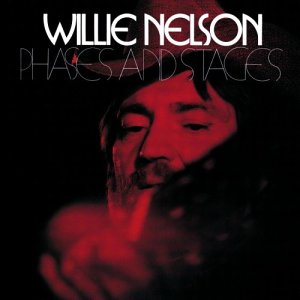
Phases and Stages is the 17th studio album by American country music singer-songwriter Willie Nelson, released in March 1974. It followed the moderate success of his first Atlantic Records release, Shotgun Willie. Nelson met producer Jerry Wexler at a party where Nelson sang songs from an album he planned to record. The single "Phases and Stages" was originally recorded the same year. Nelson recorded the album at Muscle Shoals Sound Studios in two days and Wexler produced it.
"One Mint Julep" is a R&B song, written and composed by Rudy Toombs, that became a 1952 hit for the Clovers. The song has received over 100 cover versions, both with lyrics and as an instrumental.
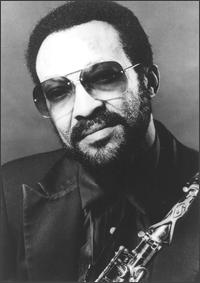
Bennie Ross "Hank" Crawford, Jr. was an American alto saxophonist, pianist, arranger and songwriter whose genres ranged from R&B, hard bop, jazz-funk, and soul jazz. Crawford was musical director for Ray Charles before embarking on a solo career releasing many well-regarded albums for labels such as Atlantic, CTI and Milestone.
Tangerine Records was an American record label founded by musician Ray Charles in 1962. Charles switched to the label in 1966. Tangerine was promoted and distributed by ABC-Paramount Records. Early singles labels were orange and later became black, red and white. Many of the later recordings are now sought after in "Northern Soul" circles. After Charles left ABC in 1973, he closed Tangerine and started Crossover Records. Ray Charles Enterprises owns the catalog.

"Driftin' Blues" or "Drifting Blues" is a blues standard, recorded by Johnny Moore's Three Blazers in 1945. The song is a slow blues and features Charles Brown's smooth, soulful vocals and piano. It was one of the biggest blues hits of the 1940s and "helped define the burgeoning postwar West Coast blues style". "Driftin' Blues" has been interpreted and recorded by numerous artists in various styles. The Blues Foundation Hall of Fame and the Rock and Roll Hall of Fame have acknowledged the influence and lasting popularity of the song.

"Here We Go Again" is a country music standard written by Don Lanier and Red Steagall that first became notable as a rhythm and blues single by Ray Charles from his 1967 album Ray Charles Invites You to Listen. It was produced by Joe Adams for ABC Records/Tangerine Records. To date, this version of the song has been the biggest commercial success, spending twelve consecutive weeks on the US Billboard Hot 100 chart, peaking at number 15.
"Confession Blues" is a song by The McSon Trio released in 1949 as a single on the Down Beat Records label. The single featured American Rhythm and blues musician Ray Charles on piano and vocals, and was also written by Charles himself under his birth name Ray Charles Robinson.

Hold That Plane! is the third studio album by blues guitarist Buddy Guy. It was recorded in November 1969, but not released by Vanguard Records until 1972.
References
- 1 2 Michael Lydon (2004). Ray Charles: Man and Music, Updated Commemorative Edition. Routledge. p. 127. ISBN 0203498321.
- ↑ Scott Schinder (2008). Icons of Rock. ABC-CLIO. p. 39. ISBN 978-0313338465.
- ↑ Mary Ann Fisher, History Inspired. Retrieved 9 October 2016
- ↑ Lydon 2004, p. 122.
- ↑ Carin T. Ford (2007). Ray Charles: "I was Born with Music Inside Me" . Enslow Publishers, Inc. p. 66. ISBN 978-0766027015.
- ↑ David Ritz, Ray Charles (2009). Brother Ray: Ray Charles' Own Story. Da Capo Press. pp. 167–169. ISBN 978-0786728039.
- ↑ Ritz, David. 2009. Faith In Time: The Life of Jimmy Scott. Da Capo Press. P 122-125